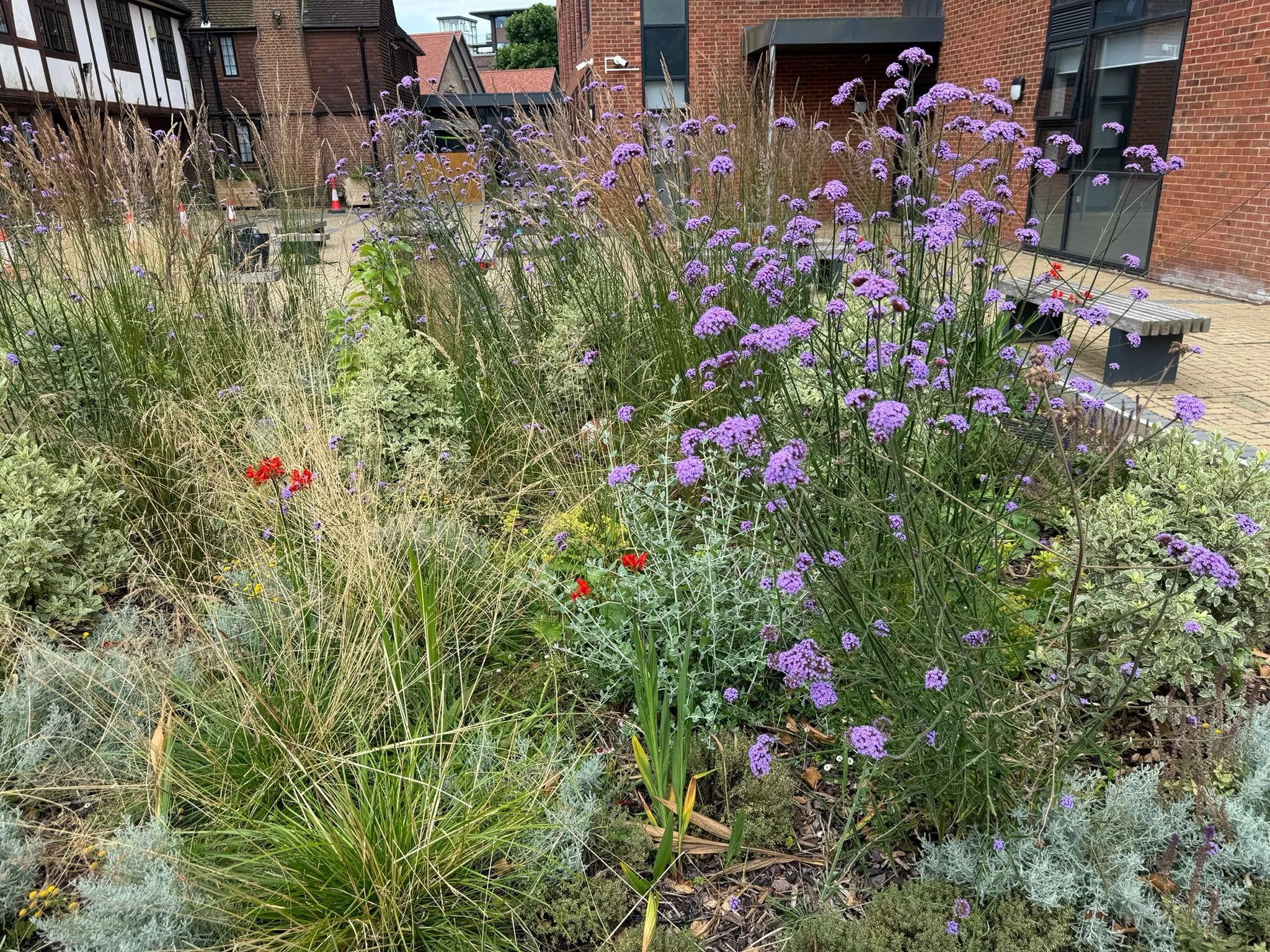A rain garden is not only a stunning addition to a landscape, but it is a vital sustainable component in surface water management.
Observation and maintenance are crucial for rain gardens as their dynamic nature can require continuous adaptation depending on its environment. Keep reading for the top five reasons a rain garden can fail, why maintaining it is so key and the best ways to keep it thriving.
Not sure what a rain garden is? In short:
Rain gardens are a type of Sustainable Drainage System (SuDS) that capture rainfall before it enters the piped network and either releases it slowly into the network or allows it to infiltrate into the ground.





For more detail and to find out the benefits of a rain garden, head over to our rain garden product page.
Top 5 reasons a rain garden fails
Wrong plant specification
Lack of water during dry spells
Heavy leaf coverage when below trees
Water inlets blocked with debris, leaves, or litter
Water inlets above sitting water line
HOW TO KEEP A RAIN GARDEN THRIVING
Regular observation and inspection: Keep an eye on your plants to see what’s working and check for any stress. It’s important to also ensure that the garden is draining properly after heavy rainfall.
Weeding and mulching: Try and remove invasive plants and weed regularly. A layer of mulch helps to keep these at bay, plus retains moisture.
General plant care: Not all plants work 100% of the time. Swap out any that are struggling and prune any dead vegetation to promote growth.
Check on those grasses: If grasses are present in the garden, it’s important to keep them trimmed because when they grow too long and then get wet, they can smother and crush the other plants.
Watering: Although low maintenance, new plants that haven’t established will need some extra water attention, especially during dry periods.
Clear inlets: To help keep water freely flowing, water inlets should be regularly cleared of any leaves or fallen debris.
Engage the community: A rain garden can be a great tool for engaging the community, especially when residents take ownership of ongoing maintenance. Having extra pairs of eyes can help ensure the rain garden stays clear of litter and is watered and weeded.
SuDS can help bring communities together. This is especially the case if the community has been involved in the SuDS design process and residents have ownership of the ongoing maintenance. Without proper involvement and public awareness, there is a risk of backlash, potential vandalism of rain gardens, and communities refusing these solutions in the future. This can jeopardize the broader goal of a widespread rollout.
THE IMPORTANCE OF MAINTENANCE
Ensuring proper functionality: Keeping the rain garden clear and functioning is a top priority. Regular maintenance ensures that the garden's soil is capable of absorbing water.
Controlling invasive species: Invasive plants can quickly take over a rain garden and its native species which reduces biodiversity. It’s key to regularly weed and keep these at bay.
Supporting plant health: Proper pruning and fertilisation are vital for plant health. Feeding plants in the early years with mulch is usually sufficient. With the soil being free draining, and with a lot of water passing through, this can often wash nutrients away from planting areas to the lower layers.
Aesthetic appeal: Not just beneficial to the environment but also to our wellbeing and happiness - it’s important to keep the rain garden well-tended and attractive to provide a vibrant area for local communities.
Educational value: Maintained rain gardens showcase the benefits of environmentally-friendly landscaping which may inspire others to implement something similar in their area.










